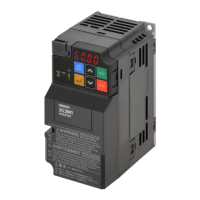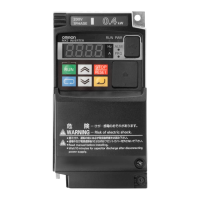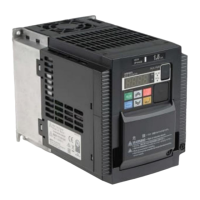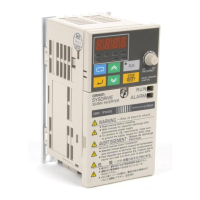(5) The braking load is large. Compare the load’s braking tor-
que with the braking torque of
the inverter.
→ Set the value of
1st rated
voltage at base frequency
(3004-06 hex) to 0 to improve the
braking performance.
→ Consider using a braking re-
sistor.
Design the inverter so that the
braking torque of the inverter can
be secured for the load’s braking
torque.
(6) There is a ground fault on the
output side.
The inverter operates normally
when operated with the wires
disconnected from inverter out-
put terminals (U, V, and W).
→ Check if there is a ground
fault on the output wires or the
motor
.
If overvoltage is indicated when
the inverter is operating with the
wires disconnected from the in-
verter output terminals (U, V, and
W).
→ There is a possibility of an in-
verter failure.
Confirm that the motor cables
are not broken and connect them
correctly.
(7) A malfunction occurred due to
noise.
Check if the DC link bus voltage
at occurrence of the overvoltage
is below the set overvoltage de-
tection level.
→ Take measures against noise.
→ Enable the function of
Auto-
reset Count (3008-05 hex).
→ Connect a surge absorber to
the coil, solenoid, etc. of the
electromagnetic contactor, which
is the noise source.
Excessive noise may be generat-
ed around the inverter. Consider
taking measures against noise.
Attached in-
formation
None
Precautions/
Remarks
None
Appendices
A-237
M1 Series EtherCAT Type User’s Manual (I670)
A-5 Sysmac Error Status Codes
A
A-5-2 Error Descriptions

